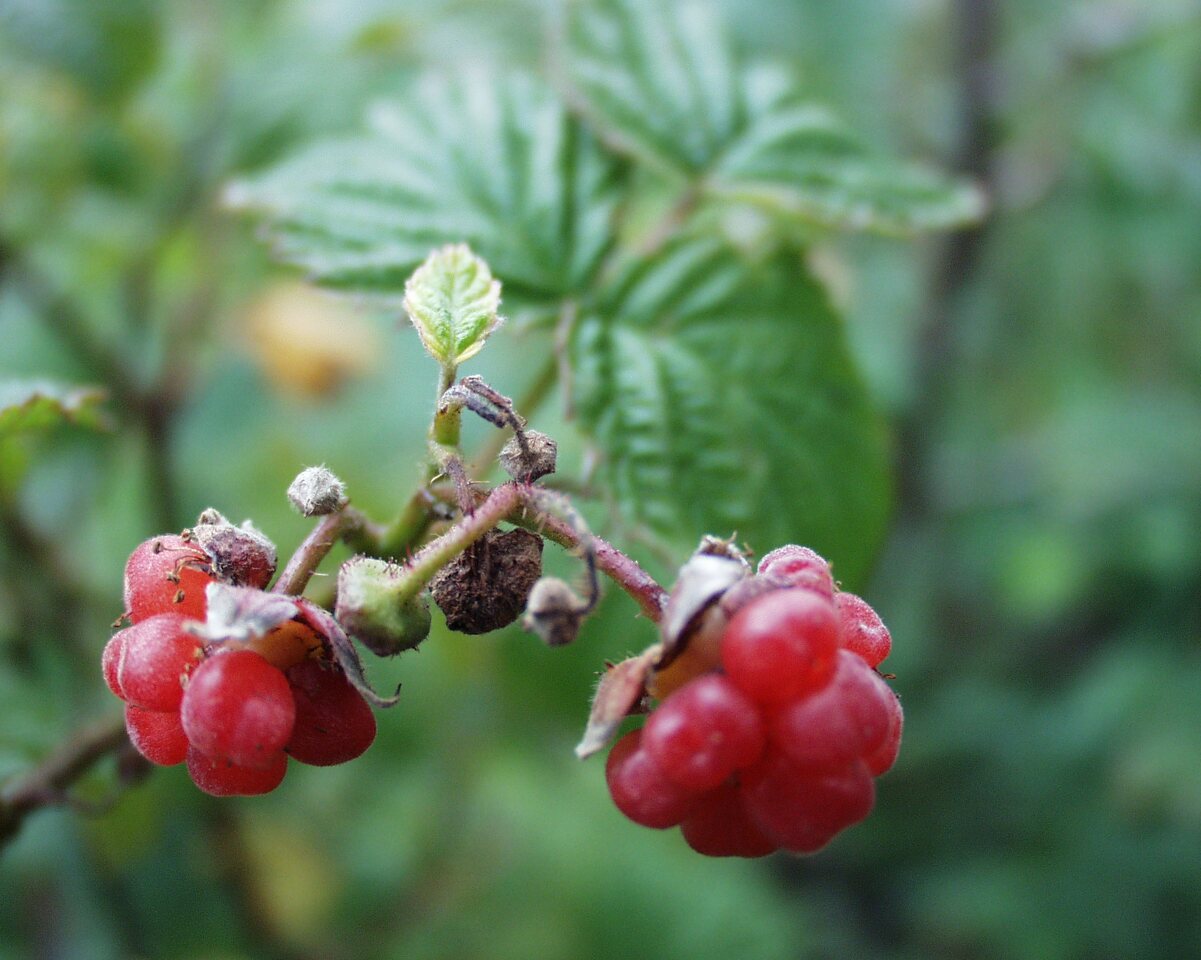
Rubus idaeus fruits · paprastoji avietė
- European red raspberry
- Himbeere
- paprastoji avietė
- meža avene
- malina właściwa
https://en.wikipedia.org/wiki/Rubus_idaeus Plants of Rubus idaeus are generally perennials, which bear biennial stems ("canes") from a perennial root system. In its first year, a new, unbranched stem ("primocane") grows vigorously to its full height of 1.5–2.5 m, bearing large pinnately compound leaves with five or seven leaflets, but usually no flowers. In its second year (as a "floricane"), a stem does not grow taller, but produces several side shoots, which bear smaller leaves with three or five leaflets. The flowers are produced in late spring on short racemes on the tips of these side shoots, each flower about 1 cm diameter with five white petals. The fruit is red, edible, and sweet but tart-flavoured, produced in summer; in botanical terminology, it is not a berry at all, but an aggregate fruit of numerous drupelets around a central core.
As a wild plant, R. idaeus typically grows in forests, forming open stands under a tree canopy, and denser stands in clearings. In the south of its range (southern Europe and central Asia), it occurs only at high altitudes in mountains.
Paprastosios avietės auga visoje Europoje ir Azijos miškuose, vidutinio klimato juostoje, drėgnose vietose, krūmynuose, pamiškėse. Jų sutinkama į šiaurę iki 66 laipsnių šiaurės platumos, pietų kraštuose auga rečiau, tiktai kalnuose. Plinta šaknų atžalomis, todėl sudaro tankius sąžalynus. Lietuvoje dažna rūšis. Avietės geriausiai dera užuovėjose, drėgnesnėse, puriose dirvose.
‥
0 comments
Add a comment